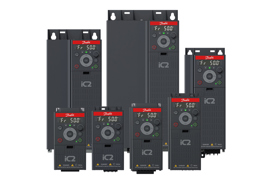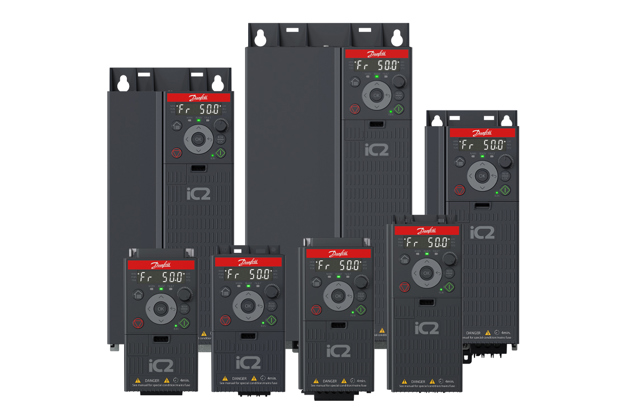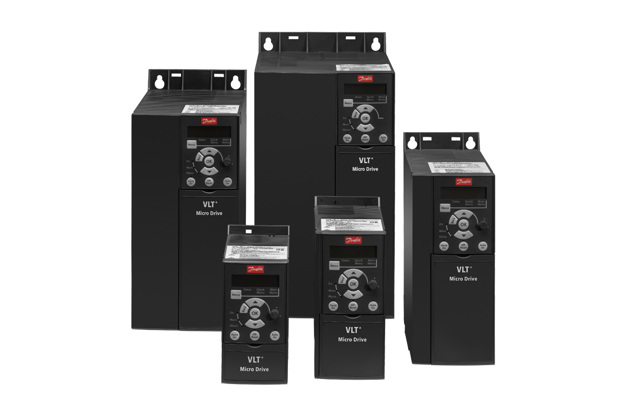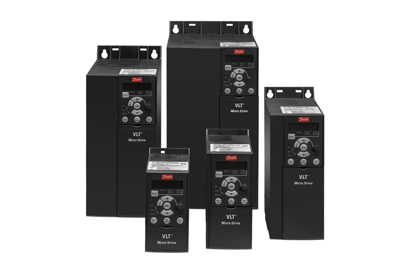Recipes for cheese are thousands of years old, passed down through generations and crossing continents —like the Swiss cheese recipes used by Shep Ysselstein, owner and “grand fromage” of Gunn’s Hill Cheese in Woodstock, Ontario, Canada.
Located in the green-grass dairyland of Oxford County, two hours west of Toronto, Gunn’s Hill Artisan Cheese is known for handcrafted, Swiss-style soft, semi-hard and hard cheeses. They are made from recipes that Ysselstein brought back from a one-year study of cheese making in Switzerland. But that Old World recipe is now a New World reality thanks to a secret ingredient: Danfoss VLT® Drives.
Recipe for success
“Cheese making involves processing a lot of fluids,” explains Ysselstein. “We’re pumping thousands of gallons of milk in and out of different vats, stirring in different ingredients, maintaining precise temperatures in a clean environment and lifting and transporting wheels of cheese up to 55 pounds. We depend on Danfoss drives to make this operation move.”
Having earned a business degree several years earlier, Ysselstein opened the small, family-owned enterprise in October 2011. He sells cheese in a retail shop attached to the factory as well as through wholesale operations. A family dairy farm —Friesvale Farms —located next door to the factory, supplies milk.
“Oxford County is famous for being the dairy capital of Canada,” says Ysselstein. “Our family farm has been in business for over 60 years. The quality of the milk comes through in the cheese, especially in the curds. They are immensely rich in flavor and their ‘squeak’ can be enjoyed during a great snack.”
Each of Ysselstein’s three varieties of washed rind cow’s milk cheeses uses slightly different processes. The soft cheese is modeled after a little known Swiss recipe called Mutchli. This mild, creamy cheese is excellent for serving or melting, developing a buttery flavor after just four weeks of aging. The semi-hard recipe combines traits from Gouda and another Swiss variety called Appenzeller. Its creamy, rich flavor has sweet overtones with distinctive eyes in the body of the cheese. The mild version is aged 5 months and the semi-hard version, 12 months. Finally, the hard variety is a Swiss mountain-style cheese with rich, dry, nutty overtones aged one year. An extra-aged style will be available in two to three years.
Fluid and motion control challenges
The fluid and motion control required in the process can be seen in the many steps involved in making semi-hard cheeses. Whole Holstein milk is pumped into a cheese vat, where it is pasteurized at 145°F for one-half hour. Then, starter culture is stirred into the milk to turn the lactose into lactic acid. An hour later, rennit is added to thicken the milk into a mass, like gelatin. When the milk is at the right thickness, it is cut into small pieces known as “curds.” For semi-hard cheeses, the cut pieces are the size of a kernel. The curds are heated by adding hot water. The hotter the water, the drier will be the cheese as the curds shrink and separate from the liquid whey. The curds are then transferred from the vat to the drain table. Then the whey is removed, while the curds form a mass at the bottom.
Six hours after the milk was first pumped in, the curds are cut into squares and pressed into a round plastic mold, which squeezes out more whey. Pressing can take 20 minutes or overnight, depending on the desired hardness of the cheese. The round wheel of cheese is then immersed into salt brine for two days.
Finally, the cheese is lifted from the brine onto racks where it is aged to develop flavor. The aging room is kept at 54°F and 90 percent relative humidity. The cheese is turned every other day and washed with a salt water solution. The outside surface turns an orange color from natural microbes, unlike the dyes used by other cheese makers. After the proper aging time, the cheese is ready to eat —the result of hand craftsmanship and advanced technology.
Throughout the operation, a series of Danfoss VLT® Micro Drives are used to provide pumping and mixing capabilities.
“Using Danfoss variable frequency drives was recommended by my HVACR contractor, Ben Kungl, of Oxford Energy Solutions,” explains Ysselstein. “The drives operate our AC pump motors, letting us dial the right speed for a given task.”
“Actually, there are about 15 Danfoss VLT® Drives used in the plant for a wide range of jobs,” notes Kungl. He himself grew up on an Oxford County dairy farm. After getting technician’s training at a local technical college and working for the award-winning Performance Dairy Centre, he started his own businesses: Oxford Energy Solutions and Oxford Refrigeration.
“There are a lot of old-school ideas about using fixed-speed pumps and motors in dairy processing equipment,” says Kungl. “But in this day and age, you have to be as efficient as you can be.”
Get more information
-
if (isSmallPicture) {


 iC2-Micro
iC2-MicroThis next-generation micro drive gives you great cost effectiveness, durable reliability, and user-friendly commissioning and operation, all in a compact package.
-
if (isSmallPicture) {


 VLT® Micro Drive FC 51
VLT® Micro Drive FC 51The smallest drives in the FC51 series are ideal for side-by-side mounting with a high integration density.






